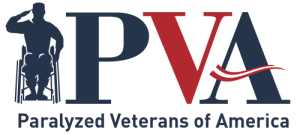There was a total lack of understanding when it came to the specialized needs of my SCI
Health care was something I never personally thought much about. But from its beginning, Paralyzed Veterans of America (PVA) has thought a great deal about health care and it’s in large part the very reason PVA was created.
I use the Department of Veterans Affairs (VA) health care system for all of my care, but I have never been an inpatient in a VA hospital. After the accident when I incurred my spinal-cord injury (SCI), I spent a couple of weeks in a local trauma center before the Navy chose to send me to a private rehabilitation facility, keeping me close to my home and family.
That facility was then called the Sister Kenny Institute (now Courage Kenny Rehabilitiation Institute) in Minneapolis. This was long before there was a SCI center at the local VA. Fortunately for me, Sister Kenny lived and breathed SCI, and the care I received there was exceptional. The providers there even took care of the pressure sore I had developed on my coccyx while in the trauma center.
After I completed my acute rehab and left that facility in 1990, I was blessed with good health and never found myself an inpatient in the hospital again until late last summer.
This was after returning from the National Veterans Wheelchair Games in New York City. I wasn’t feeling well and headed to urgent care at the Carl T. Hayden Veterans’ Administration Medical Center in Phoenix.
After drawing labs, I received a preliminary diagnosis of acute myeloid leukemia. The physician in urgent care immediately realized this was outside the wheelhouse of this VA facility, called for an ambulance and had me moved to a private sector hospital that was equipped to handle this diagnosis.
I began a 30-plus-day initial patient stay at that hospital and quickly began to recognize that the care for the leukemia seemed to be in place, but there was a total lack of understanding when it came to the specialized needs of my SCI. I developed a large pressure sore on my backside, the first one
I’d had since that trauma center experience more than 30 years ago. It took six months of daily skilled nursing care to heal that wound, and it still requires constant attention to prevent it from reopening.
The work PVA puts into ensuring quality care for its membership within the VA SCI centers across the country is nothing short of phenomenal. When you’re admitted to a SCI center, you can be certain you’re receiving the best care possible, not only for the condition that initiated your admission, but for the care and prevention of a multitude of secondary conditions.
Even though I haven’t been an inpatient in a VA hospital, I know for certain that when you’re an inpatient at a SCI center, the ancillary care for SCI-related conditions is addressed. This may include regular visits during your inpatient stay from physical therapy and occupational therapy to get you up in your wheelchair whenever possible and working to maintain your strength and range of motion, even if you’re unable to get out of bed.
If your diagnosis requires you to be in the intensive care unit or any other ward in the hospital, SCI team staff will be following you to ensure that your SCI needs are being met.
PVA is the only veterans service organization to make regularly scheduled visits to VA facilities with a team of healthcare professionals to assess the care being delivered at the SCI centers and make recommendations to improve the quality of care when necessary. These recommendations may address proper staffing levels or even parking at the facility.
You can be assured that no one is more involved in the specialized care you receive at the VA than PVA. There was a total lack of understanding when it came to the specialized needs of my SCI.
This role of advocacy with the VA can be traced all the way back to PVA’s first meeting as an organization in February 1947. At that meeting, an issue within the VA was discussed.
The VA was having a problem retaining physical therapists. Physical therapy is a crucial component to the rehab process in SCI. Recognizing this problem and the core reason the problem existed, PVA passed a resolution at that meeting to work with the VA to accord the same benefits to physical therapists that were then available to nurses and dietitians.
This was PVA’s first official action as an organization to work with the VA to improve the health care for our members at the facilities then designated to provide specialized care to our members.
The PVA Medical Services Department conducts regular site visits at the SCI centers. The first thing the team does during these visits is meet with veterans who use the facility to hear their opinions. Then, they meet with doctors, nurses, therapists and others to better learn what PVA can do to help them in our mutual goal of providing the best possible care.
If you’re eligible to receive your care at one of the now 25 SCI centers across the country, I highly encourage you to do so. Even if you seem to be completely healthy and are just going about life, the annual exam that’s offered is an opportunity to catch serious problems early or simply make you aware of new equipment that may be available to enhance your quality of life.
Take care of yourself, and make use of the benefits you’ve earned.



